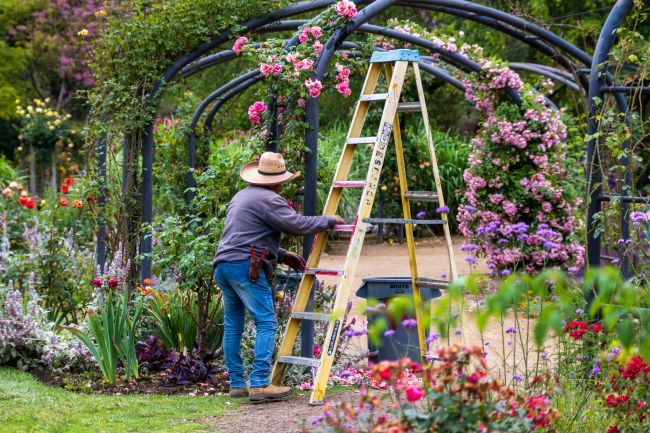Allergy-Friendly Gardening: Best Plants for Hay Fever Sufferers

Tips and tricks to help you enjoy your hobby better
If you love gardening, then having hay fever can be a major setback to fully enjoying this pastime. Hay fever can trigger an array of symptoms that not only affect the experience of gardening but also your quality of life.
This is why it is important to choose the right type of plants that can help reduce the possibility of triggering an allergic reaction.
What are hay fever and plant allergies?
According to the Met Office, two in every ten people suffer from pollen allergies. Hay fever, or allergic rhinitis, is a common allergy in the UK, which is an immune reaction to a fine powder released from plants known as pollen. When pollen comes into contact with a person, it can trigger an allergic reaction with symptoms that resemble a cold.
Plant allergies, on the other hand, are an overreaction to pollen from certain plants. These can result in inflammation of the airways, eyes, and even lungs. It can also worsen preexisting conditions in some people
Symptoms and triggers of hay fever
Some of the symptoms of hay fever include sneezing, runny or blocked nose, itchy and watery eyes, itchy throat and ears, headaches and fatigue.
Grass is the most common trigger; however, people can be allergic to both grass and tree pollen, which can lead to prolonged symptoms.
Pollen from different plants and the reactions they cause
Peak seasons are different for the varied plant types. The peak season for grass is from May to July, while the peak season for trees is from March to mid-May, and the weeds for peak season are from the end of June to September.
Differences between wind-pollinated and insect-pollinated plants
Wind-pollinated plants, as the name suggests, rely on the wind to transfer pollen. These plants are often small and lack scent or nectar. They also produce a large amount of lightweight pollen, and their reproductive organs are exposed to maximise pollen dispersal and capture
Insect-pollinated plants use insects to carry the pollen. These plants are often brighter, have a scent and produce nectar to attract pollinators. The pollen is sticky or spiny for insects, and their reproductive organs are enclosed within the flower.
Plants you should avoid
When curating your garden, there are a few plants that you should avoid.
• Grass: This is the major source of airborne pollen in the UK. To reduce being affected, it is best to avoid grass in your garden.
• Trees: Birch, oak, and ash trees are more likely to trigger your hayfever.
• Weeds: To reduce being triggered by hay fever, it is best to have ragweed, nettle, and dandelions removed from your garden.
• Garden Flowers: To preserve your health, try to omit flowers like daisies, chrysanthemums, asters, sunflowers, lilies, and marigolds in your garden.
Prevention Tips
If you have no alternative, there are several ways to prevent being triggered by hay fever.
• Monitor pollen counts from reliable sources, and plan your activities around low pollen levels. Try to avoid going outdoors when the pollen count is medium to high. The peak times of day when the counts are high are during the early morning and early evening.
• Limit your exposure to pollen by keeping windows closed during high pollen level periods, and avoid drying clothes and linen outside where they can collect pollen.
• As it is spring now in the UK, and as the Met Office reported, hay fever affects around 10 million people in England. To improve your quality of life during this time, it will be best to obtain a prescription for medication to alleviate hay fever symptoms.
• Apply a barrier balm, like petroleum jelly, around your nostrils to trap pollen, and wear a hat and sunglasses to protect your eyes and hair.
Plants you should opt for instead
Despite being affected by hay fever and plant allergies, there are still plenty of options you can include in your garden that won’t trigger a pollen-related reaction.
• Flowers: You can choose options like geranium, peonies, iris, hydrangeas, foxgloves, snapdragons, petunias, begonias, tulips, hostas, violets, primrose, scabious, verbena, daffodil, and gladiolus.
• Shrubs and Trees: Options like conifers, magnolias, amelanchiers, and fruit trees are great to position as barriers in your garden.
• Indoor Gardens: If you want some flowers in your home, you can choose flowers like peace lilies, dracaena, areca palm, aloe vera, snake plant, and spider plant.
Tips for designing an allergy-friendly garden
• Use conifers and shrubs as pollen barriers.
• Choose double-flowered varieties, as they are less exposed to pollen.
• Avoid planting heavily scented or wild plants in your garden.
• Make an effort to have weeds removed and mow your lawn frequently to reduce pollen sources.
• Make use of ground cover and mulch to suppress weeds and pollen.
Maintenance tips if you suffer from plant allergies
• While it is best to avoid early mornings, the best time to garden is in the morning after rain.
• Wear gloves and protective clothing when gardening. Make sure to wash them immediately afterwards.
• Ensure that compost heaps are covered.
• Make sure that you regularly clean outdoor furniture to remove any pollen.
Conclusion
Allergy-friendly gardening is possible. However, it requires some thought and effort from you as a gardener. Following good practices and choosing plants that are least triggering to your allergies can help you enjoy a beautiful garden without triggering a reaction.


